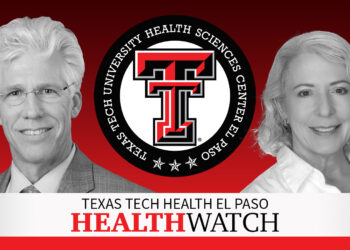Consumption of ultraprocessed foods — ie, foods fortified with preservatives, additives, salt, sugar, and added fats — is a global problem, especially in the US. In fact, these foods represent more than half of the average daily energy intake.
Contributing to this alarming trend are ready-to-eat breakfast cereals for children, which in the past decade have emphasized ingredients that favor palatability — significantly more sugar, fats, and sodium — vs health (eg, fiber or protein).
“One of the biggest takeaways from our study is that newly launched cereals marketed to children in the US have trended in the wrong direction nutritionally,” Qingxiao Li, PhD, study coauthor and assistant professor in the Department of Agricultural Economics and Agribusiness at Louisiana State University in Baton Rouge, Louisiana, told Medscape Medical News.
“Despite growing attention to child nutrition, the lack of nutritional improvement in this prominent food category suggests that broader dietary challenges persist,” she said.
An Unhealthy Start
The cross-sectional analysis of product attributes (nutritional content, ingredients, packaging, and target audience) of food and beverage product launches highlighted that between 2010 and 2023, new children’s cereals contained a 33.6% increase in total fat (1.13-1.51 g), a 32.1% increase in sodium (156.0-206.1 mg) and a 10.9% increase in sugar (10.28-11.40 g) per serving.
Though protein content fluctuated in the earlier years, it declined rapidly (a mean of 1.97 g between 2010 and 2020 to 1.69 g in 2023). A similar trend was seen in fiber content, which by 2023, had dropped to 2.94 g from 3.82 g in the prior 2 years.
“These are standardized changes, so they account for serving size differences,” explained Li. “It’s concerning because it suggests that even the newest options in the cereal aisle, ones you’d hope might reflect progress, are moving away from healthier norms.”
Paradoxically, skipping breakfast has been linked to childhood overweight and obesity, as well as cardiometabolic risk. However, the study findings underscored an alarming trend, said Suzanne Cuda, MD, a pediatric and adolescent obesity specialist, Obesity Medicine Association spokesperson, and medical director for Alamo City Healthy Kids & Families in San Antonio.
“If you look at the paper, one serving of breakfast cereal provides 45% of the recommended carbohydrate intake for the day,” she said. “But most school-aged children are eating way more than that — two to three servings — over 100% of the recommended daily intake. And it’s not a nutritious form of carbohydrates.”
Cuda explained that children with obesity have insulin resistance due to excessive intake of carbohydrates. “If they’re not burning it all off (and the obesity epidemic is largely due to the fact that most kids are not), over time they become chronically insulin resistant, which leads to dysregulation of glycemia, prediabetes, and ultimately diabetes,” she said.
Convenience Over Content
As consumers increasingly demand healthier cereals with greater fiber and protein content, there is some indication that the tide is turning.
Still, convenience and budget are both top priorities for many Americans. And given the rising costs of groceries, some parents make food purchases that are not always the healthiest.
Additionally, about 53.6 million Americans (17.4% of the population) live in low-income, low-access areas that are 0.5-10 miles away from the nearest supermarket, according to the US Department of Agriculture (USDA).
“I think about the overabundance of unhealthy foods, how heavily marketed they are, how available they are almost everywhere, including in different school food environments with competitive food sales,” said Maya Vadiveloo, PhD, associate professor in the Department of Nutrition at the University of Rhode Island in Kingston, Rhode Island.
“A lot of kids are having soda and chips with breakfast, and some cereals have moved in the unhealthy direction because they are competing,” said Vadiveloo, who is also chair of the American Heart Association (AHA) Nutrition Committee. “The AHA has been championing the need to improve the diet because of the already alarming health trajectories.”
Amy Reed, a registered dietitian and spokesperson for the Academy of Nutrition and Dietetics, expressed a similar sentiment.
“Depending on the nutritional composition of children’s diets, the immediate concern is that they are not getting good nutrition at formidable [formative] periods of their life when they are growing,” Reed said. “We focus a lot on ages 0-2, but there’s a lot of growth that happens after that.”
This is especially true of calcium and vitamin D, reinforcing the value of cow’s milk, fortified soy milk, or pea protein milk (nut milks are less equivalent).
“A lot of families don’t understand that it’s important to have a source of calcium and vitamin D throughout childhood and adolescence, and even young adulthood, because you’re building bone mineral density (BMD) up until the mid-to-late 20s,” Cuda said. “You only get one chance; you can’t try to recover BMD later in life.”
Children’s Nutrition at a Crossroads
Despite time constraints, pediatricians and family doctors often do as much as they can to advise families on healthy food swaps; organizations like the AHA, the Obesity Medicine Association, and the Academy of Nutrition and Dietetics also offer a myriad of nutritional resources on their websites.
The recently passed federal budget bill includes $186 billion in cuts to the Supplemental Nutrition Assistance Program, known as SNAP, according to the Urban Institute. The program provides food assistance to more than 40 million people, including children, seniors, and those with disabilities.
“We know from other examples in public health that policy is an important piece in regulation to creating an environment that promotes health,” said Erin Hennessey, PhD, dean for Research Strategy and associate professor at the Friedman School of Nutrition Science and Policy at Tufts University in Boston.
“By removing long-standing beneficial programs or making changes that limit their ability to provide healthy foods as well as access, we are not going to make our children healthy again; we’re actually going to make things worse for them,” said Hennessey, who is also director of the ChildObesity180 program at Tufts University.
Recent updates to USDA’s School Nutrition Standards track closely with goals of removing highly processed foods and reducing salt, sugar, and fats to counter the trends identified in the breakfast cereal study. Such changes could also help address the challenges posed by the breadth of food deserts in this country.
“I want to stress that this is not about individual choice; rather, it’s the system that we’re embedded in that is shaping the choices we are and are not able to make,” Hennessey said. “Parents want what’s best for their children, and initiatives like SNAP and School Breakfast [Program] and National School Lunch Program shape children’s access to healthy foods and contribute a significant portion of their daily calories.”
Findings from the cereal nutrition study served to reinforce that certain foods are cheaper, convenient, and aggressively marketed to kids. “We need policies that prioritize children’s health over all other things,” Hennessey said.
The study was funded by grants from the National Institute of Food and Agriculture and the USDA. Li, Cuda, Vadiveloo, Reed, and Hennessey reported having no relevant financial relationships.
Liz Scherer is an independent health journalist and a frequent contributor to Medscape Medical News and Medscape Global News.
Source link : https://www.medscape.com/viewarticle/newly-launched-kids-cereals-prioritize-taste-over-health-2025a1000ji9?src=rss
Author :
Publish date : 2025-07-23 13:05:00
Copyright for syndicated content belongs to the linked Source.











